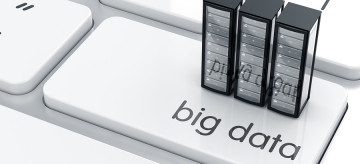- Advertising
- Bare Metal
- Bare Metal Cloud
- Benchmarks
- Big Data Benchmarks
- Big Data Experts Interviews
- Big Data Technologies
- Big Data Use Cases
- Big Data Week
- Cloud
- Data Lake as a Service
- Databases
- Dedicated Servers
- Disaster Recovery
- Features
- Fun
- GoTech World
- Hadoop
- Healthcare
- Industry Standards
- Insurance
- Linux
- News
- NoSQL
- Online Retail
- People of Bigstep
- Performance for Big Data Apps
- Press
- Press Corner
- Security
- Tech Trends
- Tutorial
- What is Big Data
Why Better BI May Lie in the Cloud (But Not the One You're Thinking)

What is the single greatest factor that affects business performance today? Do you think it’s new technologies? Maybe it’s the economy. Perhaps, it’s the labor force, or even government regulations? No, no, and no. The single greatest factor that affects business performance is: the weather. The weather determines the cost of energy. It affects the supply chain in multiple ways. It keeps employees from getting to work, and gets in the way of critical business appointments. The weather can change everything—and do so in a heartbeat. Heat waves, lightning strikes, violent storms, ice and snow—all of these affect business performance. In areas where solar energy is crucial to the power grid, even clouds can affect business performance, and we don’t mean cloud computing.
The Weather Company is Turning Weather Data into Valuable BI

The Weather Company has earned lots of recognition (and some valuable business contracts) for their projects to collect, analyze, and deliver valuable data for business intelligence from weather. Weather, as it is, happens to be the original and single greatest big data problem, according to Weather Company’s CTO and CIO Bryson Koehler.
Koehler came to The Weather Company in 2012, when the company was struggling to maintain 13 data centers, strained in terms of capacity, and a collection of ancient apps. Today, it is a powerful source of business data for a variety of other companies. He helped established a new cloud-based infrastructure for predicting weather events and delivering weather-related information. This data is valuable across industries and around the globe.
According to The Weather Company’s analysis, the weather’s effect on business performance amounts to about $1 trillion in losses each year, just in the United States. When weather data is used in conjunction with other vital business data, it can lead to better decisions for all industries. For example, retailers can make better decisions regarding their supply chains and inventories. Insurance companies can make better decisions and help advise their customers on better ways to avoid damages as dangerous weather systems move in.
Weather Data and the IoT

The Weather Company is also investing heavily in the IoT, perhaps one of the richest sources of data available to date. When you think about it, all weather collection points are actually IoT devices. These sensors collect and deliver data on all kinds of factors that affect various businesses, including temperature, wind speeds, wind directions, barometric pressure, humidity, and more.
Through the use of IoT devices and the vast amount of inexpensive storage afforded by the cloud, the project is now able to collect, store, analyze, and derive meaningful business intelligence from more than 100,000 sources, including smartphones, buildings, aircraft, weather sensors, vehicles, and more.
What can you do with more cloud resources? And by cloud, we’re talking cloud computing, now, not cloudy weather. You can get better BI, and Bigstep can help.
Find out what more cloud power can do for your business when you come see our products.
Comments
Readers also enjoyed:

Bigstep, ODBMS.ORG and Big Data


Leave a Reply
Your email address will not be published.